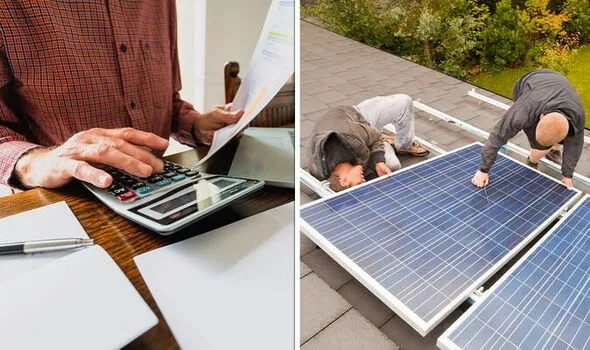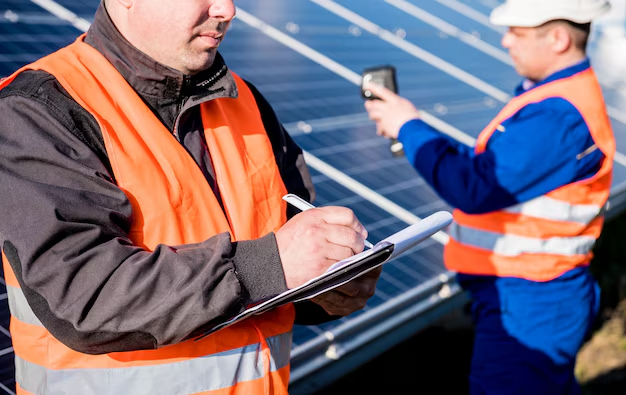In recent years, the importance of sustainability and eco-friendliness has grown immensely, leading many homeowners to seek greener alternatives for their home renovations. Green renovations not only benefit the environment but also provide long-term cost savings for homeowners through improved energy efficiency. With the Australian government announcing cheaper loans for green renovations, it’s the perfect time to consider making your home more eco-friendly.
What are Green Renovations?
Green renovations refer to any home renovation that incorporates sustainable practices and materials. These practices can include energy-efficient upgrades, such as installing solar panels or improving insulation, using sustainable building materials, such as bamboo or recycled glass, and implementing water-saving features like low-flow showerheads and faucets.
Benefits of Green Renovations
There are several benefits to choosing green renovations over traditional renovations. Firstly, green renovations can significantly reduce your home’s environmental impact.
By implementing energy-efficient upgrades, you can reduce your home’s carbon footprint and lower your energy bills.
Secondly, green renovations can improve your home’s indoor air quality by using non-toxic building materials that reduce the release of harmful chemicals into the air.
Lastly, green renovations can increase the value of your home in the long run, as eco-friendly homes are becoming increasingly popular in the real estate market.
Cheaper Loans for Green Renovations
The Australian government recently announced cheaper loans for green renovations as part of their efforts to encourage sustainable practices.
The loans, known as the Green Home Loan scheme, offer a 0.5% discount on interest rates for homeowners who make environmentally friendly upgrades to their homes.
The National House Energy Rating Scheme (NatHERS) is a program that provides an energy efficiency rating for new builds in Australia.
The program has recently been expanded to include all existing homes in the country, enabling homeowners to obtain a NatHERS certificate and qualify for green loans from banks.
These upgrades include energy-efficient improvements, solar panel installations, and water-saving features.
The Green Home Loan scheme aims to provide homeowners with financial incentives to make sustainable choices and help Australia reach its emissions reduction targets.
Making Your Home More Eco-Friendly
If you’re interested in making your home more eco-friendly, there are several steps you can take. Firstly, consider conducting a home energy audit to identify areas of your home that are using excessive energy. This audit can help you prioritize which areas to improve first. Secondly, research sustainable building materials and choose products that are environmentally friendly and energy-efficient. Lastly, consider installing water-saving features such as low-flow showerheads and faucets to reduce water usage.
Diagram:
Improving Energy Efficiency
One of the most significant benefits of green renovations is improved energy efficiency. By reducing the amount of energy your home uses, you can lower your carbon footprint and save money on your energy bills. There are several ways to improve your home’s energy efficiency, including:
Installing solar panels:
Solar panels can generate clean, renewable energy for your home, reducing your reliance on fossil fuels.
Upgrading insulation:
- Insulation helps keep your home warm in the winter and cool in the summer, reducing the amount of energy needed to maintain a comfortable temperature.
Replacing old appliances:
Old appliances can be energy hogs, using significantly more energy than newer, more energy-efficient models.
Installing energy-efficient windows:
Energy-efficient windows are designed to prevent heat loss in the winter and heat gain in the summer, reducing the amount of energy needed to regulate your home’s temperature.
Using Sustainable Building Materials
Another way to make your home more eco-friendly is by using sustainable building materials. Sustainable building materials are made from renewable resources and have a lower impact on the environment than traditional building materials. Some examples of sustainable building materials include:
Bamboo:
Bamboo is a fast-growing, renewable resource that can be used for flooring, countertops, and even structural support.
Recycled glass:
Recycled glass can be used to make countertops, tiles, and other decorative elements in your home.
Cork:
Cork is a renewable resource that can be used for flooring, insulation, and soundproofing.
Reclaimed wood:
Reclaimed wood is wood that has been salvaged from old buildings or structures and can be used for flooring, furniture, and other decorative elements.
Key Areas of Green Renovations
When it comes to green renovations, there are several key areas that homeowners can focus on to make their homes more sustainable:
- Energy-Efficient Insulation and Windows: Improving insulation and upgrading windows can significantly reduce energy loss and improve thermal efficiency in homes. Proper insulation helps maintain a comfortable indoor temperature while reducing the need for excessive heating or cooling.
- Sustainable Flooring Options: Choosing eco-friendly flooring materials such as bamboo, cork, or reclaimed wood not only adds a touch of natural beauty to the home but also reduces the environmental impact associated with traditional flooring options.
- Energy-Efficient Lighting: Switching to LED lights and incorporating natural lighting solutions can greatly reduce energy consumption and enhance the aesthetic appeal of the home.
- Water Conservation Strategies: Implementing water-saving fixtures, rainwater harvesting systems, and efficient irrigation methods can help minimize water usage and promote sustainable water management.
- Efficient Heating and Cooling Systems: Upgrading to energy-efficient heating, ventilation, and air conditioning (HVAC) systems, along with programmable thermostats, can optimize energy consumption and provide year-round comfort.
- Renewable Energy Integration: Installing solar panels or wind turbines allows homeowners to generate their own clean energy, reducing reliance on traditional energy sources and lowering carbon emissions.
Green Renovation in Australia
Australia is embracing the concept of green renovation as a means to promote sustainability and reduce the environmental impact of residential buildings. With its unique climate conditions and a growing awareness of the need for energy efficiency, green renovations are gaining popularity across the country.
Government Initiatives and Incentives
The Australian government has recognized the importance of sustainable building practices and offers various initiatives and incentives to encourage green renovations. These programs aim to support homeowners in making energy-efficient upgrades and adopting eco-friendly practices.
One notable initiative is the Home Energy Efficiency Retrofit (HEER) program, which provides financial assistance and resources to homeowners for energy-efficient renovations. The program offers grants, rebates, and low-interest loans to support the installation of energy-efficient appliances, insulation, solar panels, and water-saving fixtures.
Additionally, the National Australian Built Environment Rating System (NABERS) provides a rating system for the energy efficiency and environmental performance of buildings. This system encourages homeowners and businesses to strive for higher ratings, promoting sustainable renovations and operations.
Sustainable Building Materials
In Australia, there is an increasing availability of sustainable building materials specifically designed for green renovations. These materials are sourced responsibly and have lower environmental impacts compared to traditional building materials. Some examples include:
- Recycled and Reclaimed Materials: Utilizing recycled and reclaimed materials, such as timber, bricks, and tiles, helps reduce the demand for new resources and minimizes waste.
- Low Embodied Energy Materials: Choosing materials with low embodied energy, such as bamboo, straw bale, or rammed earth, decreases the carbon footprint associated with manufacturing and transportation.
- Energy-Efficient Windows: Installing energy-efficient windows with double or triple glazing and low-emissivity coatings improves insulation and reduces heat transfer, resulting in reduced energy consumption for heating and cooling.
- Insulation: Using high-quality insulation materials, such as wool, cellulose, or recycled polyester, helps maintain stable indoor temperatures and reduces the need for excessive heating or cooling.
Sustainable Design Principles
Green renovations in Australia also focus on incorporating sustainable design principles to maximize energy efficiency and minimize environmental impact. These principles include:
- Passive Solar Design: Optimizing the orientation and layout of the building to take advantage of natural light and heat from the sun, reducing reliance on artificial lighting and heating systems.
- Cross-Ventilation: Designing spaces to encourage natural airflow, utilizing windows, doors, and vents strategically to enhance indoor air quality and reduce the need for mechanical ventilation.
- Water Efficiency: Implementing water-saving measures, such as rainwater harvesting systems, greywater recycling, and efficient irrigation methods, helps conserve water resources and reduce reliance on mains water supply.
- Sustainable Landscaping: Creating eco-friendly outdoor spaces by using native plants, drought-tolerant landscaping, and permeable surfaces that allow rainwater to infiltrate the soil, reducing water runoff and promoting biodiversity.
Green Renovation Certification
To ensure the quality and credibility of green renovations, Australia has established certification programs such as Green Star and the Residential Efficiency Scorecard. These programs evaluate the sustainability performance of buildings and provide certifications based on specific criteria related to energy efficiency, water usage, materials, and indoor environmental quality.
By obtaining these certifications, homeowners can demonstrate their commitment to sustainability, increase the market value of their properties, and provide transparency to potential buyers or tenants about the green features of their renovated homes.
Conclusion
In conclusion, green renovations are a sustainable approach to home improvement that provides numerous benefits to both the environment and homeowners. With the Australian government’s announcement of cheaper loans for green renovations, there’s no better time to consider making your home more eco-friendly. By implementing energy-efficient upgrades, using sustainable building materials, and installing water-saving features, you can reduce your home’s environmental impact and lower your energy bills. Consider making the switch to green renovations for a more sustainable and cost-effective home.
FAQs
Q: What are the benefits of green renovations?
-
- A: Green renovations offer energy efficiency, cost savings, reduced environmental footprint, improved indoor air quality, and enhanced home value.
Q: What are some key areas of green renovations?
-
- A: Key areas include energy-efficient insulation and windows, sustainable flooring options, eco-friendly lighting, water conservation strategies, efficient heating and cooling systems, and renewable energy integration.
Q: How can homeowners select responsible materials for green renovations?
-
- A: Homeowners can choose sustainable building materials, opt for locally sourced materials, and prioritize durability and longevity.
Q: Can green renovations increase the value of my home?
-
- A: Yes, green renovations have the potential to increase the value of your home. Energy-efficient features, sustainable materials, and eco-friendly practices are becoming increasingly desirable to homebuyers. By investing in green renovations, you can attract potential buyers who are willing to pay a premium for an environmentally friendly and energy-efficient home.
Q: How can I find reliable contractors for green renovations?
-
- A: When searching for contractors for green renovations, it’s important to look for those with experience and expertise in sustainable building practices. Seek recommendations from friends, family, or local green building associations. Ask for references and inquire about their certifications or qualifications in green building.








